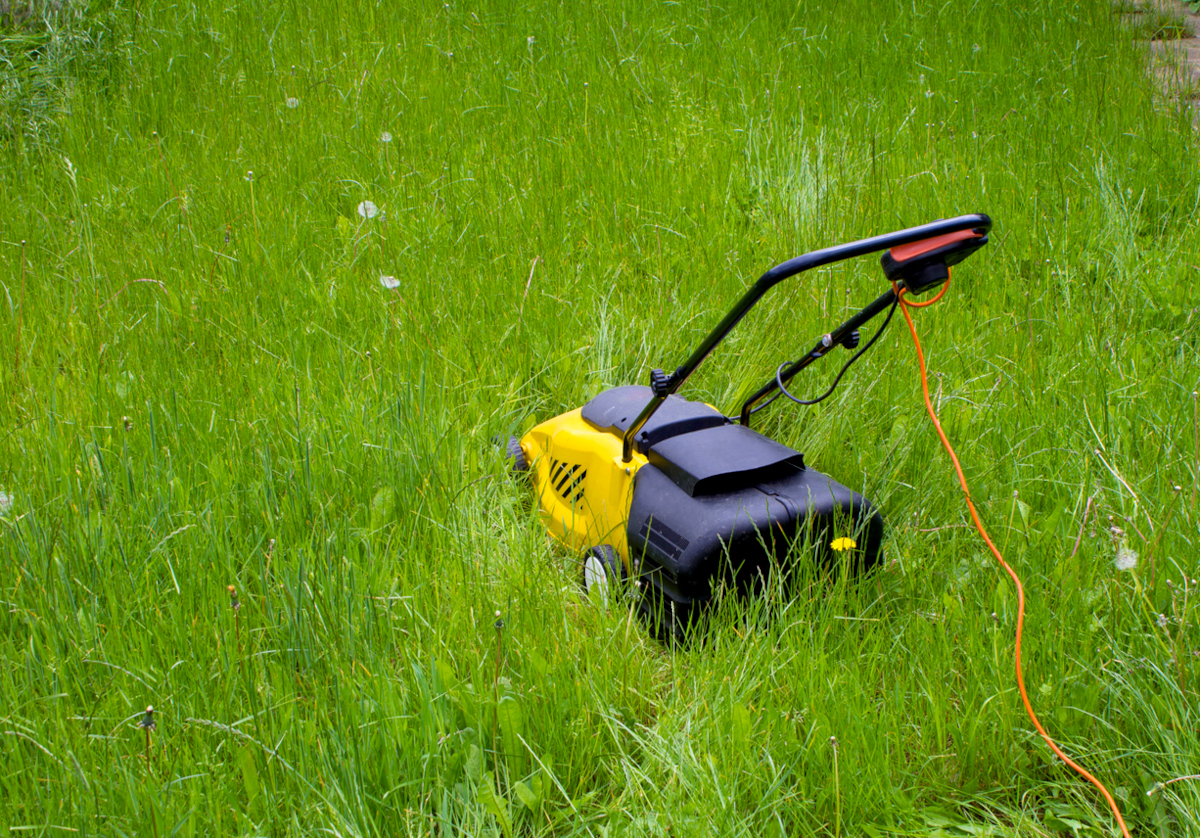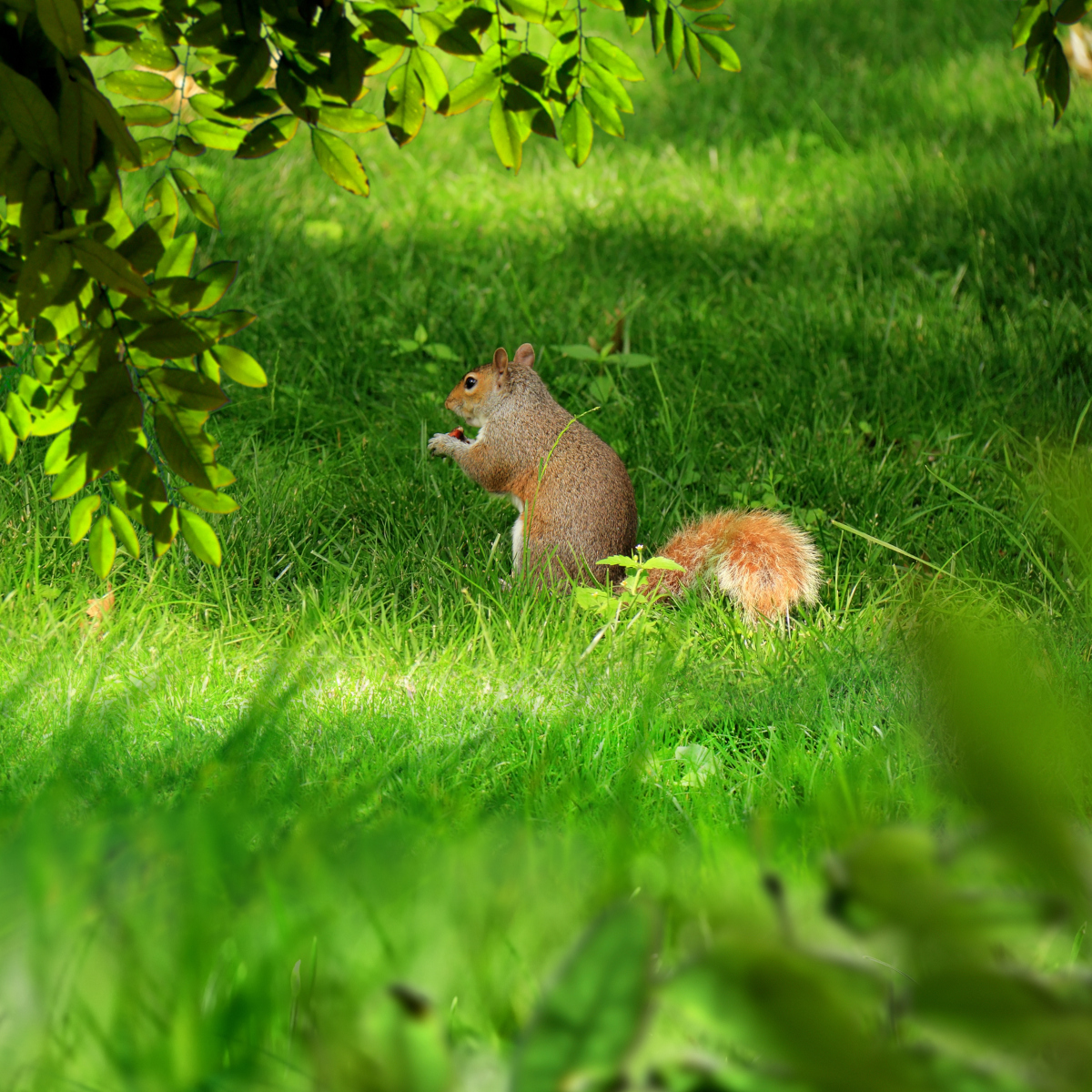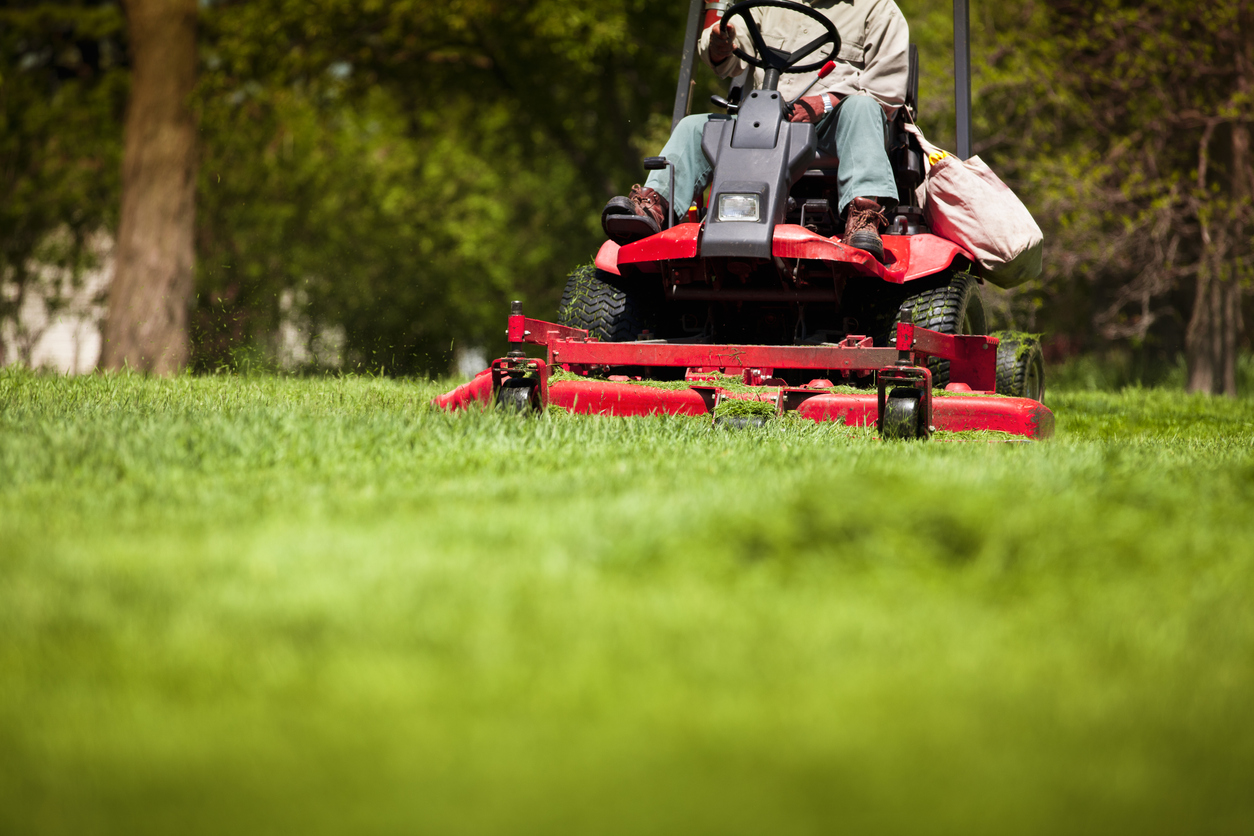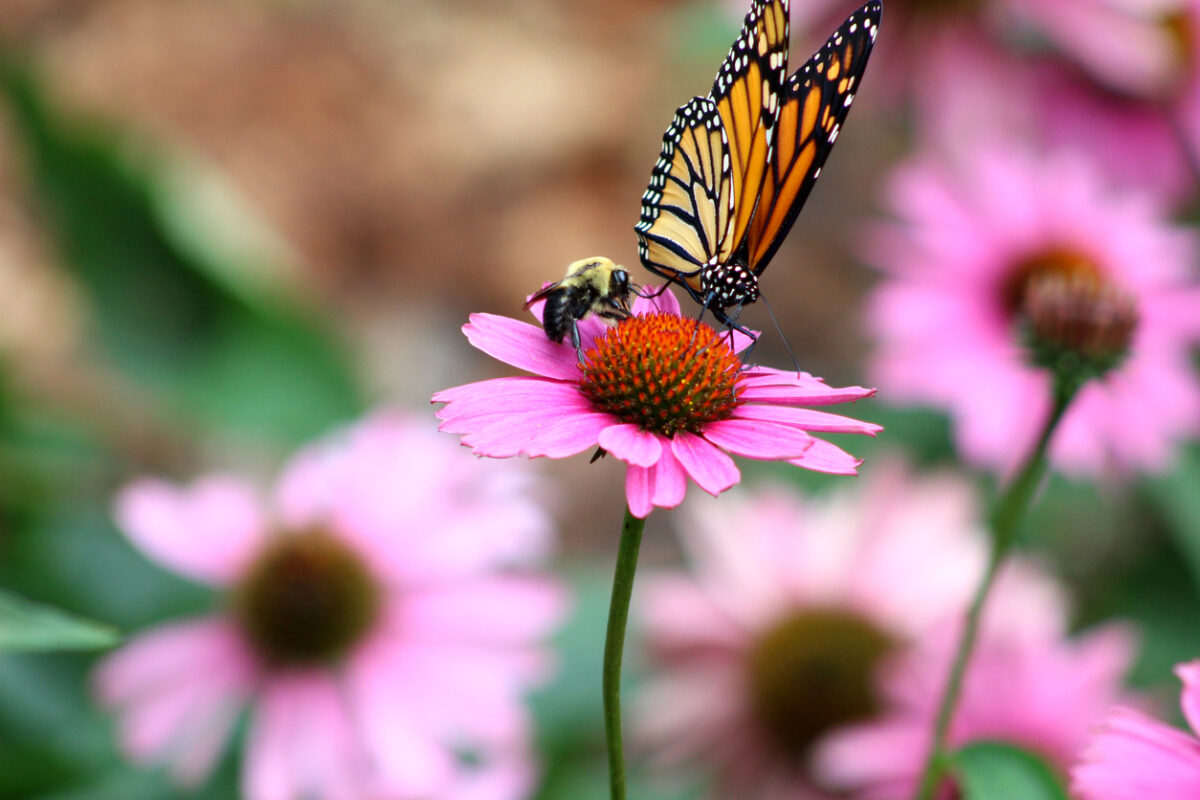

We may earn revenue from the products available on this page and participate in affiliate programs. Learn More ›
No Mow May was started in 2019 by citizen scientists in the United Kingdom as part of a conservation study to support struggling pollinators. Homeowners were encouraged to leave their lawn mowers in storage through the month of May and allow their lawn weeds to grow and bloom. The idea was that participants’ lawns could then produce essential pollen and nectar for bees and other pollinators during the critical period in which they were emerging from hibernation.
Results in the U.K.’s initial study included a massive increase in floral diversity when these beneficial bugs need it most. A year later, residents of Appleton, Wisconsin, organized their own No Mow May, and the results were impressive. Researchers reported a threefold increase in bee species diversity and a fivefold increase in the number of bees in no-mow yards compared with neighboring yards that were mowed as usual. Since then, the movement has gained a life of its own, with supporters and opponents trumpeting an endless string of social media hype, opinions, and pseudo-science.
As a backyard habitat enthusiast, amateur beekeeper, and someone who is generally curious about nature, I decided to try No Mow May in my own yard. Having spent decades in the landscaping and nursery industry, selling, installing, and maintaining all kinds of lawn grasses, I knew that letting my lawn grow a month without mowing would not kill it, and any superficial damage could be reversed within a few weeks. The biggest risk would be establishing a weed seed bank, but that is kind of the point; if you really hate lawn weeds, this project probably is not for you. Here’s what happened in my yard.
I started No Mow May in March.
Where I live in Georgia, the climate is different from that of the U.K. or Wisconsin. Pollinators emerge long before May, so I adjusted the “no mow” period to fit the local climate and ecology. I normally begin mowing in mid-March. Based on when the grass started growing and looking “ready” for its first cut of the season, I began my “no mow” month on March 19. Daytime temperatures were consistently reaching into the 60s, and overnight lows were ranging from around freezing to the mid-40s.
In a month I saved about 6 hours that I would have spent on mowing and trimming the edges.
— Mark Wolfe
My lawn is a mix of centipede grass, Bermuda grass, and tall fescue grass. At this early point of the season, the fescue grass and cool-season weeds were growing well, but the warm-season grasses were just slowly breaking dormancy. Flowering weeds like chickweed, henbit, dandelion, speedwell, and bitter cress proliferated alongside annual bluegrass.
Tall grass and flowering weeds attracted lots of wildlife.

I admit that I did not go all-in on this project. My lot is just under an acre, with about half covered by the house, driveway, landscape beds, and a vegetable garden. Of the remaining approximately 20,000 square feet of grass, I mowed the 5,000 square feet nearest the front and back of the house. I’m glad I did.
Mowing eliminates cover for rodents, snakes, and other wildlife that most of us don’t want inside our homes. While my unmowed area brought in significantly higher numbers of bumblebees, carpenter bees, assorted small bees, hoverflies, butterflies, and moths, as the grass and weeds grew taller I also had more migrating and resident songbirds, chipmunks, field mice, and on two occasions, king snakes. Judging from impressions on the grass, especially near my compost pile, vegetable garden, and close to the wooded area behind my property, I suspect that we had an increase in nocturnal visitors like deer, opossums, raccoons, foxes, and coyotes, too. It’s probably best to always mow a barrier strip around the house to reduce the risk of unwanted wildlife taking up residence in the basement or attic.
I adjusted my “no mow” timing for the weather.
As the end of the 4 weeks approached, I wanted to time the first mowing so that it would be as stress-free on me and the grass as possible. Temperatures were already approaching the upper 80s, and the weather had been dry. At about day 26, I saw a cooldown and rain in the forecast for the following week, so I let it go a few extra days. At this point of the season, the early spring weeds were going to seed, and our local tulip poplar trees and dwarf white clover were coming into their peak bloom time. They and other floriferous mid-spring plants would offer plenty of forage for pollinators. The grass was close to knee-high in some places, but mostly around 10 to 12 inches tall.
I enjoyed the break from lawn upkeep.
If there is such a thing as an objectively beautiful landscape, my yard was not that during the “no mow” period. It was weedy, seedy, full of random flowers, and the overall color was a patchwork of greens and tans. But in a month I saved about 6 hours that I would have spent on mowing and trimming the edges. I used that time for working on the vegetable garden and catching up on a little light pruning that I missed during the winter.
I also spent quite a bit of time looking for visiting pollinators, watching out for snakes, and identifying weeds. It was a pleasant way to spend the early spring, and the grass was not so tall as to be a major hassle when it was time to mow again.
Here’s how and when I started mowing again.

Because I mow with a lawn tractor, it was not difficult to make the first cut of the season in the fourth week of April. On a semi-cool, dry evening, the day after a decent rain, I double mowed the yard. With the deck on its highest setting, I mowed back and forth in one direction. Then, without adjusting the deck height, I mowed back and forth in a perpendicular direction to the first cut. The double cut eliminated much of the debris, but I had to rake and collect clippings in a few spots. I’m sure that the process was made easier thanks to the drier-than-average spring weather and limited lawn growth rate.
The lawn looked ragged until the grass recovered.
After a month without mowing, the newly exposed lower parts of the lawn were pale and somewhat sparse. To get it back in shape, I mowed again 5 days after the first cut, then again 6 days later. I lowered the deck a couple of notches each time to get back to the proper maintenance height. Three mowings in 2 weeks and another rain event had the lawn pretty much back to normal by mid-May.
I will do No Mow May again.
I live in a non-HOA neighborhood outside the city limits, so there are no covenants and few ordinances governing my approach to gardening and lawn care. But I do want to be a good neighbor and respect other homeowners’ concerns about weed encroachment and the potential for attracting pests into their homes. In this environment it was fairly easy to let the yard get shaggy for a few weeks with only a few raised eyebrows and head scratches from the neighbors.
It is not accurate to say that I reduced the use of fertilizer, herbicide, or irrigation by participating in the No Mow May initiative, since I don’t use those products in the first place. My pre-existing passive approach to lawn care meshes well with the program. I normally mow once every week or two throughout the growing season. Going forward, I can simply wait an extra 3 to 5 weeks before beginning my regular routine.
In my immediate area, this initiative may not provide a noticeable difference for pollinators. Our small neighborhood is surrounded by a mix of woodland, wetlands, infrequently mowed roadside and utility rights-of-way, and a large hobby farm with several acres of pasture. But I consider No Mow May more akin to setting up a bird feeder in that it may not be necessary, but doing so allows me to see nature up close.
There are alternatives to No Mow May.

For a variety of reasons, No Mow May is not for everyone. Millions of us live in apartments, condos, or townhomes with no yard. Municipalities and HOAs generally frown upon unmowed lawns (although, perhaps, those who run these organizations may be persuaded otherwise). And those who love a pristine lawn are simply not interested in ruining their hard work. No problem; the good news is that there are other ways to support pollinators. Following are some of the easiest and most popular ways to do so:
- Plant a balcony, patio, or rooftop pollinator garden in containers.
- Reduce the size of your lawn by 2, 5, 10, or 25 percent and manage the space for pollinators.
- Create an intentionally unkempt natural area in an out-of-the way spot.
- Choose a mix of pollinator-friendly native trees, shrubs, and perennials for landscaping.
